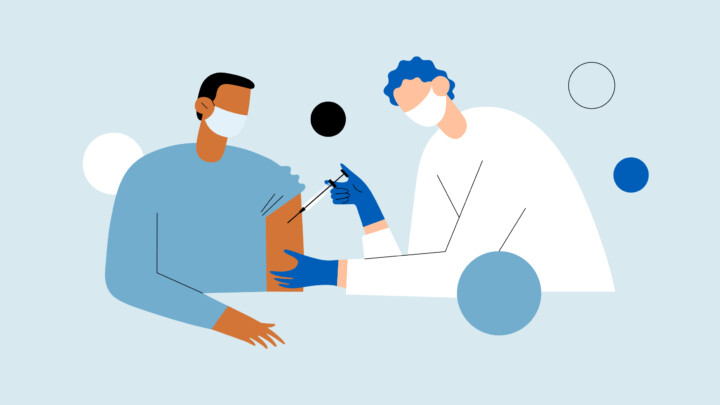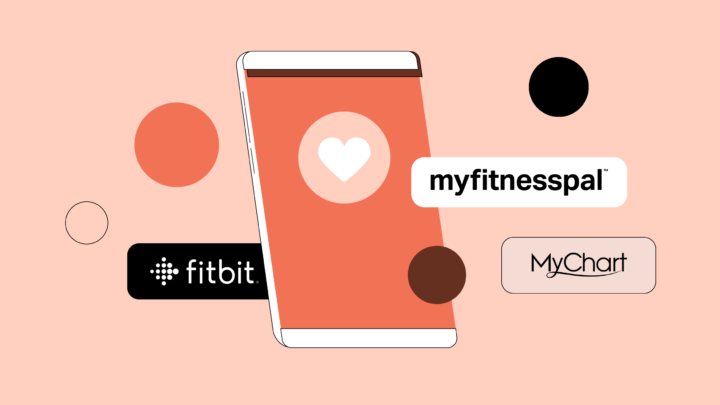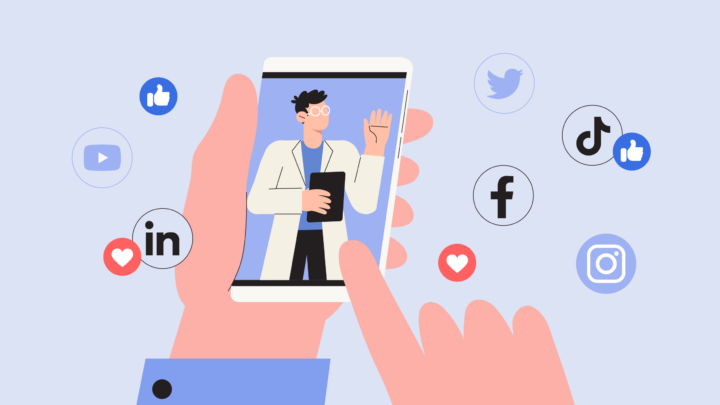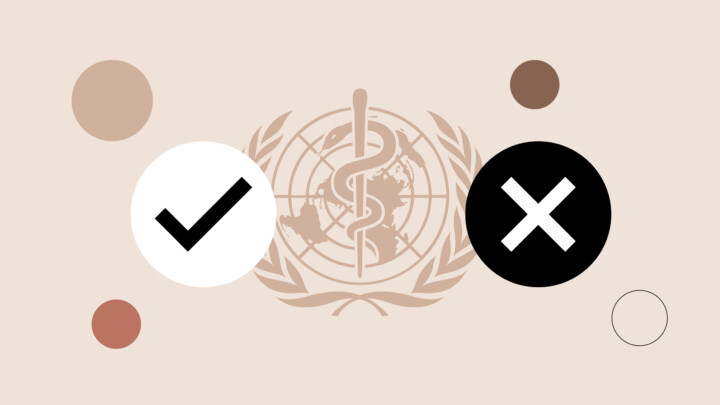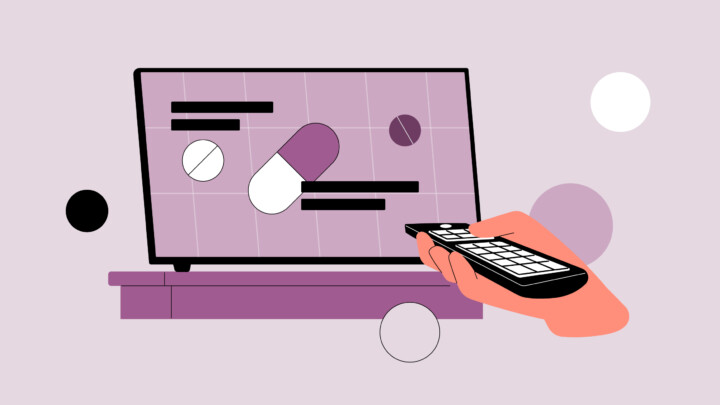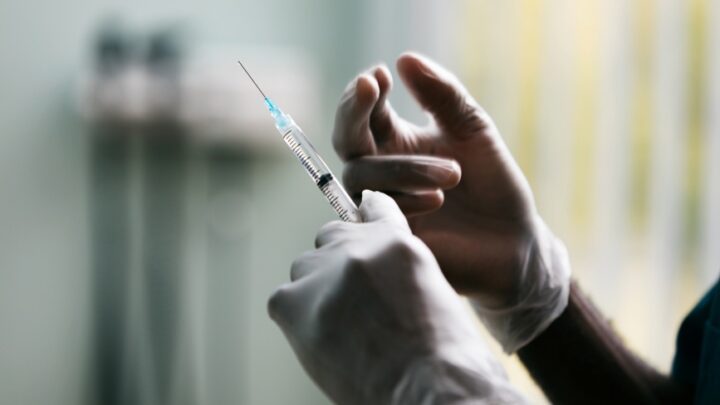
49% of surveyed physicians on Sermo say disinformation erodes trust, making it harder to guide patients toward evidence-based care. That’s the message from physicians on Sermo, and it underpins a challenge that’s becoming as much about communication as it is about clinical facts.
The Journal of Medical Internet Research defines health disinformation as “a false or misleading health-related claim that is not based on valid evidence or scientific knowledge.” However, in a digital landscape where scientific knowledge is questioned, emotions drive clicks, and trust is fragile, the lines are blurring fast. Misinformation, by contrast, refers to inaccurate or false information that is spread without intent to deceive, often by well-meaning individuals who may not realize the content is incorrect.
So, what do physicians think misinformation looks like in 2025? How is it changing their practice? And what are they actually doing about it?
This article explores these questions using exclusive Sermo poll data, member commentary, and insights from the Journal of Medical Internet Research.
What does medical misinformation look like in 2025?
In 2025, platforms like YouTube, Facebook, Instagram and Twitter are some of the most influential sources of medical misinformation on social media. And often, that information is wrong.
A growing body of research highlights just how widespread this issue has become:
- Up to 51% of posts related to vaccines contain misinformation.
- For COVID-19 content, nearly 29% of posts were inaccurate.
- When it comes to posts about pandemics in general, misinformation appears in as many as 60% of cases.
- Even YouTube, with its supposedly strict moderation, shows 20–30% misinformation rates in videos about emerging infectious diseases.
- Around 44% of medical posts are health misinformation on TikTok.
And this misinformation isn’t staying online: according to a small segment of physicians on Sermo, 49% of surveyed doctors say disinformation directly erodes trust, making it harder to guide patients toward evidence-based care. Another 17% say patients regularly cite online myths in their consultations. All of these instances are changing how physicians have to speak to patients, and they’re creating barriers to trust that doctors are finding ever more challenging to keep up with.
Yet, it’s not always bad news. Perhaps counterintuitively, 15% of Sermo physicians say that when misinformation causes tension, so listening first can actually build stronger trust. When physicians lead with empathy, even tough conversations can create space for connection and trust-building.
Moreover, only 9% of physicians say patients lose trust when their beliefs are dismissed outright. This signals that it’s not the misinformation itself that does the most damage, but rather how clinicians respond to it. If they’re too forceful or too fast, their patients might simply stop listening.
There’s also an undercurrent of time pressure. Only 10% explicitly state that misinformation wastes clinical time, yet 49% say it erodes trust. That mismatch suggests that physicians are underplaying how much time impacts their ability to address misinformation. It also shows that these physicians perceive trust erosion as a more fundamental problem than the direct waste of time. Trust takes time to build, and the system doesn’t always provide it.
And then there’s the question of definition. Not all physicians agree on what constitutes misinformation. “Who defines ‘misinformation’?” asked one Sermo member working in emergency medicine. “Certainly you can’t trust the FDA, CDC, and Big Pharma.” Another, an orthopaedic surgeon, had a simpler take on misinformation: “Let’s call it what it is—LIES!”
That lack of consensus hints at the deeper complexity here. Misinformation is a contested space, even amongst healthcare professionals. Some put it down as public confusion. Others say it’s evidence of public mistrust in institutions. And for many, it’s both.
Healthcare misinformation’s impact on clinical practice
Nearly a quarter of physicians on Sermo (23%) say healthcare misinformation has created trust issues with patients, making it harder to ensure they follow evidence-based treatments.
But the damage isn’t limited to trust. For 38% of Sermo respondents, misinformation consumes time that could be spent focusing on treatment. Instead of discussing care plans or symptoms, physicians are pulled into conversations about debunking false beliefs, some of which are deeply rooted in a patient’s identity or community. Because these are narratives people cling to about their personal identity, undoing them is slow work.
Another 24% say misinformation increases hesitancy around proven treatments like vaccinations. And while only 10% mention the burden of staying up to date with the latest falsehoods, that number likely underrepresents the real cognitive load. Between caseloads, admin, and patient care, physicians are running on fumes. Adding the task of myth-busting to some encounters with patients only raises the stakes. When patients delay or refuse evidence-based interventions, the result is often poorer health outcomes and more complex cases down the line.
And then there’s the internal challenge. Even some physicians fall for misinformation. In Nepal, 41% of eye care professionals believed hot drinks could kill COVID-19, which points to gaps in training and access to reliable information.
Even the word “misinformation” is debated among physicians. As one ophthalmologist remarked, “Even the term ‘misinformation’ has had to be debunked.” In today’s fragmented information landscape, what qualifies as fact hinges as much on trust as it does on science, and not everyone agrees on where that trust should lie.
Confronting health misinformation: What should physicians do?
When misinformation enters the consultation room, physicians know that facts alone aren’t enough. While 20% of Sermo members say providing clear, evidence-based explanations is their most effective strategy, the top-ranked approaches are rooted in how that information is delivered. 35% say active listening is key, and 30% highlight the importance of a calm, non-judgmental tone. This echoes that trust is built through presence and empathy rather than just being accurate.
12% of physicians report using analogies to simplify complex science, a tactic that remains underused. In a digital world where misinformation is punchy and easy to digest, analogies help close gaps in communication. They can transform ambiguity into something graspable. But despite their potential, few doctors turn to them instinctively.
Only 4% rely on sharing trusted resources, a figure that says something powerful. In a world where misinformation is known to be everywhere, people need to see the professional behind the ‘resource’ to trust what they have to say personally. As of 2018, 95% of patients report “some” or “a lot” of trust in physicians. Even the most accurate article won’t land if it’s handed over by someone the patient doesn’t fully trust.
Strategies physicians are using now
When asked what would best support them in combating misinformation, physicians on Sermo didn’t call for more tech. Just 4% favored digital tools, while a clear 33% prioritized ongoing training. That distinction suggests doctors want practical communication skills they can use under pressure.
Nearly as many (31%) said public health campaigns were key. That shows physicians want to walk into a room with patients who are already better informed. In their view, tackling misinformation can’t fall solely on individual consultations and must start further along in the patient process through media and public education.
Interestingly, only 14% asked for reduced caseloads. That doesn’t mean time isn’t a factor, it clearly is, but most clinicians know the system isn’t about to slow down. Instead, they’re asking for support they can realistically receive: training and resources.
What broader support do doctors want?
Physicians are also looking beyond the clinic. When asked how to partner with community leaders effectively, 26% said local media should play a bigger role. That shows a growing recognition that public trust is shaped as much by news outlets and local voices as it is by medical credentials.
Educators came in close behind, with 22% support. Schools and universities offer a chance to reach people early, before false beliefs take hold. Doctors are thinking long term, with many advocating for prevention. While 21% support workshops with influencers, fewer endorse passive info-sharing. Physicians recognise the importance of having a discussion rather than simply broadcasting. Visibility has given space for misinformation to shine, so physicians now seek ways to showcase their credibility, and they want partners who will help them to achieve it.
Your takeaway
Physicians on Sermo say the fight against healthcare misinformation is about building trust through communication and involving wider communities. Listening, empathy, and public collaboration are proving more effective than facts alone. From clinics to classrooms to local media, the solution appears to be more social than scientific.

